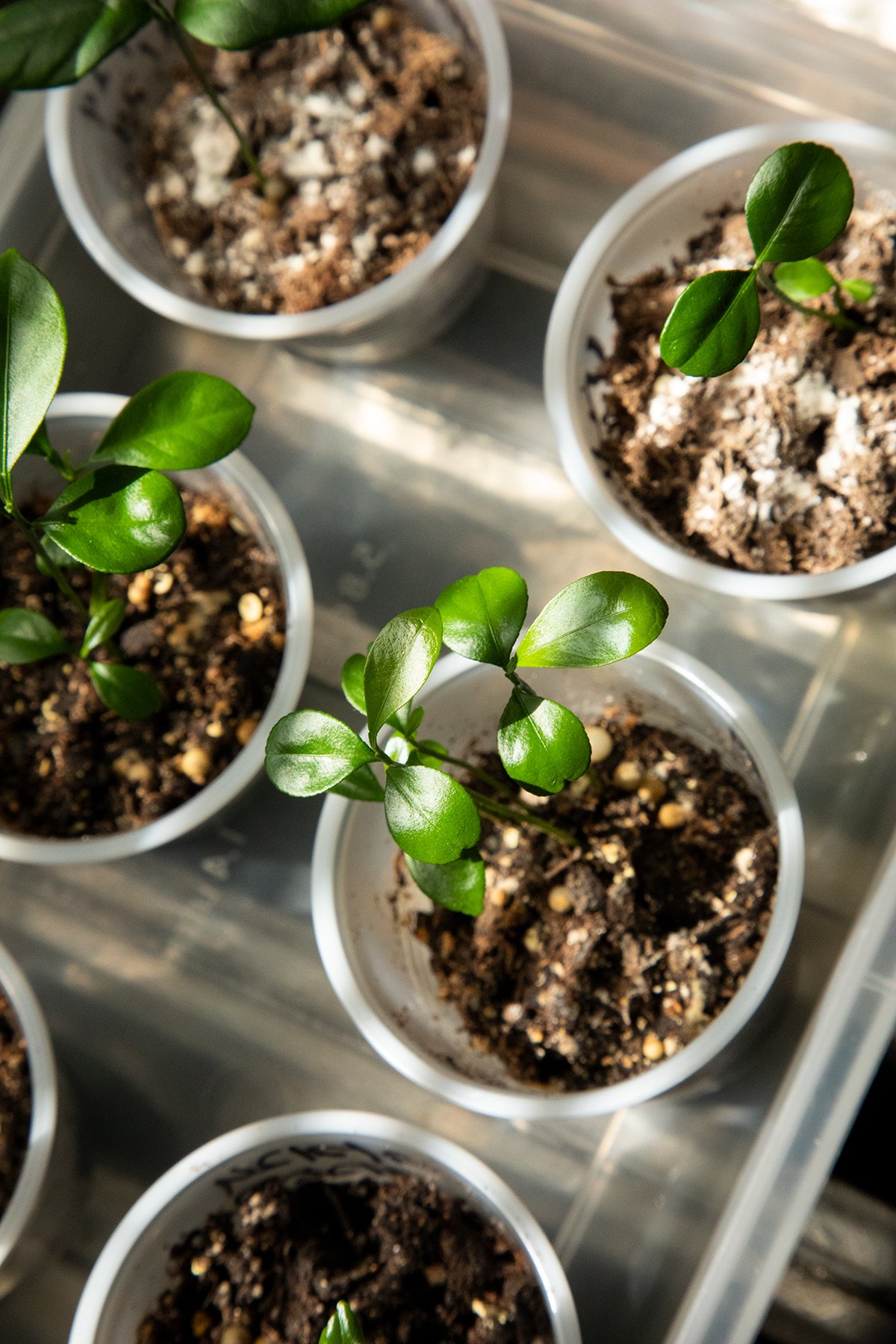An ongoing and informal list of the links in each post, this will be updated as needed.
Tips to grow a lemon tree in a pot?, r/gardening: https://www.reddit.com/r/gardening/comments/17g9r4i/soooo_tips_to_grow_a_lemon_tree_in_a_pot/
Reddit Citrus page, r/citrus: https://www.reddit.com/r/Citrus/
Citrus Varieties to Try at Home, Robin Sweetser, May 30, 2024, Almanac: https://www.almanac.com/growing-citrus-containers
How To Grow Citrus Trees Indoors, By Arricca Elin SanSone, Updated on September 29, 2022 (Fact checked by Jillian Dara), Southern Living Magazine: https://www.southernliving.com/garden/how-to-grow-citrus-trees-indoors
How to Grow and Care for Citrus Trees Indoors: Add fresh lemons, limes, and oranges you grow at home to your fruit bowl with these expert guidelines, By Blythe Copeland, Published on July 26, 2023, Martha Stewart: https://www.marthastewart.com/how-to-grow-citrus-trees-indoors-7565868
USDA Plant Hardiness Zones Map: https://planthardiness.ars.usda.gov/
NPR, The USDA’s gardening zones shifted. This map shows you what’s changed in vivid detail, By Daniel Wood, Connie Hanzhang Jin, Brent Jones and Jeff Brady: https://apps.npr.org/plant-hardiness-garden-map/
4 CITRUS TREES Northern Gardeners Can Actually Grow!, The Millenial Gardener, YouTube: https://www.youtube.com/live/MpF9lWJKCuA
National Gardening Association Forum, Potted Citrus Tree INDOORS - How far should I hang my grow light?: https://garden.org/thread/view/143078/Potted-Citrus-Tree-INDOORS---How-far-should-I-hang-my-grow-light/
University of Minnesota Extension, Growing citrus indoors, Author: Deborah L. Brown (Reviewed in 2024): https://extension.umn.edu/houseplants/growing-citrus-indoors
Effect of Aluminium on Root Growth, Cell-division Rate and Mineral Element Contents in Roots of Vigna unguiculata Genotypes, W.J. Horst, A. Wagner, H. Marschner, Institut für Pflanzenernährung, Universität Hohenheim: https://www.sciencedirect.com/science/article/abs/pii/S0044328X83801998
What is the Difference Between Deep Watering and Overwatering?, Four Winds Growers, September 2023: https://www.fourwindsgrowers.com/a/blog/what-is-the-difference-between-deep-watering-and-overwatering
Four Winds Growers Citrus Tree Instagram: https://www.instagram.com/fourwindsgrowers/
California Department of Food and Agriculture, Transport of Privately-Owned House Plants Into California From Other States, Frequently Asked Questions: https://www.cdfa.ca.gov/plant/pe/InteriorExclusion/houseplant_FAQ.html
LA Times, Can I bring plants into California? Yes, but know the rules, By Catharine Hamm, Feb. 26, 2020: https://www.latimes.com/travel/story/2020-02-26/plants-allowed-into-california-regulations
California Department of Food and Agriculture, Bringing Plants Into California, Questions and Answers: https://www.cdfa.ca.gov/plant/factsheets/TransportingPlantsCA.pdf
Should I Repot My Calamondin And If So, How?, Citrus x microcarpa, By Kiersten Rankel, Jun 18, 2024: https://greg.app/how-to-repot-a-calamondin/
Insecticidal Soap vs. Neem Oil: Which Works Better?, Humboldt Secret Supply: https://humboldtssecretsupplies.com/blogs/articles/insecticidal-soap-vs-neem-oil-which-works-better
Insecticidal Soaps for Garden Pest Control, Factsheet | HGIC 2771 | Updated: Jul 30, 2021, Clemson University Extension: https://hgic.clemson.edu/factsheet/insecticidal-soaps-for-garden-pest-control/
Treatment for Spider Mites on Citrus, Discussion in 'Citrus' started by KevyWestside, Nov 8, 2019: https://forums.botanicalgarden.ubc.ca/threads/treatment-for-spider-mites-on-citrus.96747/
How to identify and treat spider mites, Written ByJen Greene, Posted: March 10, 2021, updated: 4/14/2024: https://trexplants.com/blog/how-to-identify-and-treat-spider-mites
Does Diatomaceous Earth Control Fungus Gnats?, Mosquito Company: https://themosquitocompany.co.uk/blogs/news/does-diatomaceous-earth-control-fungus-gnats
How to control pesky fungus gnats in my potted Calamondin, Lime, Lemon and Orange plants? Cheri Abraham, PhD, Entomologist & Operations Manager, US Citrus, LLC: https://uscitrusnursery.com/blogs/citrus-simplified/how-to-control-pesky-fungus-gnats-in-potted-calamondin-lime-lemon-and-orange-plants
Hobbiest Gardening: Growing Fruit Tree Plants from Seed, Many people mistakenly believe that fruit trees come true to name from seeds, but the seeds from a fruit actually produce a new variety that is a hybrid of two plants., Rob Crassweller, Ph.D., Former Professor of Horticulture, Pennsylvania State University, June 21, 2023: https://extension.psu.edu/hobbiest-gardening-growing-fruit-tree-plants-from-seed
From Root to Fruit: The Intricate Process of Growing Fruit Trees, Moana Nursery: https://www.moananursery.com/2023/04/07/from-root-to-fruit-the-intricate-process-of-growing-fruit-trees/
Nuceller Embrony, Wikipedia: https://en.wikipedia.org/wiki/Nucellar_embryony
Polyembrony, Wikipedia: https://en.wikipedia.org/wiki/Polyembryony
Citrus Polyembryony, Written By Angel Villegas-Monter, Elisa Del Carmen Matínez-Ochoa, María Andrade-Rodriguez and Itzel Villegas-Velázquez, Submitted: 21 April 2022 Reviewed: 21 June 2022 Published: 16 July 2022, From the Edited Volume: “Citrus Research - Horticultural and Human Health Aspects” Edited by Mateus Pereira Gonzatto and Júlia Scherer Santos: https://www.intechopen.com/chapters/82707
Please help me understand “true to seed”, r/gardening, Reddit: https://www.reddit.com/r/gardening/comments/qcxyfn/comment/hhiyswl/
HARDY CITRUS FOR THE SOUTHEAST, by Tom McClendon: http://citruspages.free.fr/Hardy%20Citrus.pdf
Redwood Barn Nursery, http://redwoodbarn.com/pdfindex.html
Redwood Barn Nursery, Which citrus fruits will come true to type from seed?: http://redwoodbarn.com/PDF/Whichcitrusfromseed.pdf
Citrus, Wikipedia: https://en.wikipedia.org/wiki/Citrus
We Finally Know Where Oranges and Lemons Come From, In addition to finding where citrus come from, researchers have pinpointed the genetic origins of the fruits’ tart taste, By Jack Tamisiea, October 11, 2023: https://www.scientificamerican.com/article/we-finally-know-where-oranges-and-lemons-come-from/
DNA story of when life first gave us lemons, 8 February 2018 Helen Briggs, BBC News: https://www.bbc.com/news/science-environment-42960445
Botanical classification of citrus fruits, Citrus Pages: http://citruspages.free.fr/classification.php#classification
“Apples & Most Fruit Are Not True to Seed” Paul C Hay, Extension Educator, University of Nebraska-Lincoln Extension: https://extension.unl.edu/statewide/gage/Apples%20&%20Most%20Fruit%20Are%20Not%20True%20to%20Seed.pdf
7 Citrus Tree Mistakes to Avoid, Epic Gardener, YouTube: https://www.youtube.com/watch?v=nd1ws1fwpqc&t=46s
Citrus Pruning | Cut, Pull & Bend Branches For MAX Fruit Yields! IV Gardening, YouTube: https://www.youtube.com/watch?v=jVbr5noPAQo&t=1111s
How to prune a lemon tree – expert tips to keep it in shape, By Melanie Griffiths, last updated 30 March 2023, Homes & Gardens Magazine: https://www.homesandgardens.com/advice/how-to-prune-a-lemon-tree
When and Where Should I Trim My Calamondin?, Citrus x microcarpa, By Kiersten Rankel, Jun 18, 2024: https://greg.app/how-to-prune-calamondin/
Indoor lemon tree. Should I prune or leave it as it is? r/Citrus, Reddit: https://www.reddit.com/r/Citrus/comments/y45nuf/indoor_lemon_tree_should_i_prune_or_leave_it_as/
Is it ok to cut off citrus tree thorns? Ask an expert, Published: Aug. 06, 2022, By Kym Pokorny | For The Oregonian/OregonLive: https://www.oregonlive.com/hg/2022/08/is-it-ok-to-cut-off-citrus-tree-thorns-ask-an-expert.html
Thorns On Citrus Trees: Why Does My Citrus Plant Have Thorns?, By Amy Grant, last updated 22 April 2021: https://www.gardeningknowhow.com/edible/fruits/citrus/thorns-on-citrus-trees.htm#
The Orchard People, The Simple Art of Grafting Fruit Trees: A Complete Guide: https://orchardpeople.com/grafting-fruit-trees/
What Is A Graft Collar And Where Is The Tree Graft Union Located, By Bonnie L. Grant, last updated 6 January 2023: https://www.gardeningknowhow.com/ornamental/trees/tgen/what-is-a-graft-collar.htm
University of Florida, Citrus Propagation, Publication #HS1309, Release Date: April 9, 2021: https://edis.ifas.ufl.edu/publication/HS1309
Natural Human History of Grafting and Budding, Cornell University: https://courses.cit.cornell.edu/hort494/mg/history/HistGB.html
How (&Why) To GRAFT FRUIT TREES | Figs, Apples, Citrus, Stone Fruit+, IV Gardening, YouTube: https://www.youtube.com/watch?v=98YjOBegVdU&t=1663s
Grafting Citrus Trees with the Patch Bud - Making a Fruit Cocktail Tree, Fruit Mentor, YouTube: https://www.youtube.com/watch?v=_w051zyackM
Grafting and Budding Nursery Crop Plants, Ted Bilderback, Director, JC Raulston Arboretum and Cooperative Extension Nursery Specialist Horticultural Science, R. E. Bir, T. G. Ranney, North Carolina State Extension, Publication date: June 30, 2014: https://content.ces.ncsu.edu/grafting-and-budding-nursery-crop-plants




































